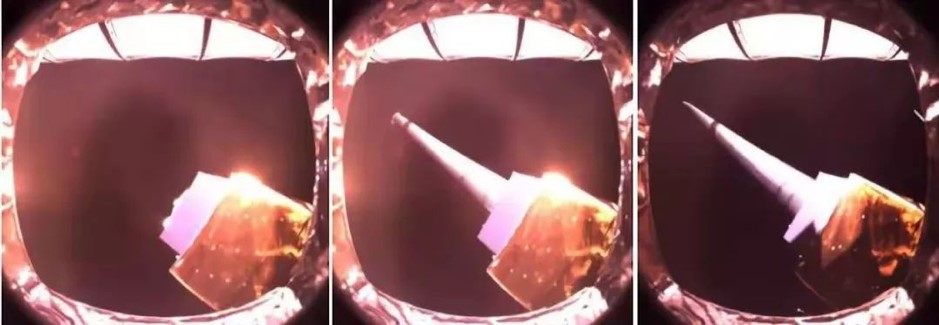Three antennas of the Dutch-Sino radio telescope, currently in orbit around the Moon, have been deployed. The Netherlands-China Low-Frequency Explorer (NCLE) instrument was waiting for more than a year prior to deployment. This took longer than expected as the host relay satellite continued the support of the Chinese lander and rover on the far side of the moon.

Until today, the host spacecraft was seen purely as a relay satellite. However, that part of the mission was concluded successfully. With the deployment of the antennas, the spacecraft has been re-classified as a radio-observatory. This makes NCLE the first Dutch-Sino space-based radio astronomy instrument.
Marc Klein Wolt – managing director of the Radboud Radio Lab and leader of the Dutch team is excited about the result: “With the deployment of the antennas and the reclassification of the satellite our stake in the Chang’e-4 mission has increased significantly. NCLE is now allowed to take continued observations during the 14-day lunar night. This is much more than what was previously possible or agreed.”
Last week, Klein Wolt travelled to Beijing to prepare for the deployment with Eric Bertels from ISISpace, the company responsible for building the instrument and antennas. Bertels: “Of course, the launch is an important event but not under our control. Now, our instrument had to show its worth which made for a more exciting time!”
Albert-Jan Boonstra from ASTRON is happy to see the deployment of the antennas after three years of hard work. Boonstra: “This is a unique technology demonstrator paving the way for future radio-astronomy instruments in space.”
Heino Falcke from Radboud University – the scientific leader of the instrument can hardly wait for the first data. “We’re finally in business and now have a radio-astronomy instrument from Dutch origin in space. The team has worked incredibly hard and the first data will now prove how well the instrument is performing.
The long wait did leave its marks on the antennas. The initial deployment went very smoothly. However, as the deployment progressed it become more difficult. The team decided to first collect data and continue deployment at a later stage. With shorter antennas, the instrument is more sensitive to signals from 800 million years after the big bang when stars began forming. With longer antennas the measurements become closer to the big bang, giving a moving picture of the formation of our universe.
About the Netherlands-China Low Frequency Explorer
The Netherlands-China Low Frequency Explorer (NCLE) is a prototype radio-astronomy instrument which aims to detect weak radio signals coming from the period just after the big bang. These signals cannot be received on Earth as the atmosphere and ground-based interference make it impossible to detect these weak radio waves. This is why the instrument shared a ride on the Chinese satellite QueQiao, which is located about 450.000 kilometres away, or 65.000 kilometres above the Lunar surface.
With this satellite, the Chinese space agency CNSA controls a lander and rover on the far side of the moon, both of which landed early 2019. The Netherlands-China Low-Frequency Explorer was developed by Radboud University (Nijmegen), ASTRON (Dwingeloo) and the company ISISpace (Delft) with support from the Netherlands Space Office

